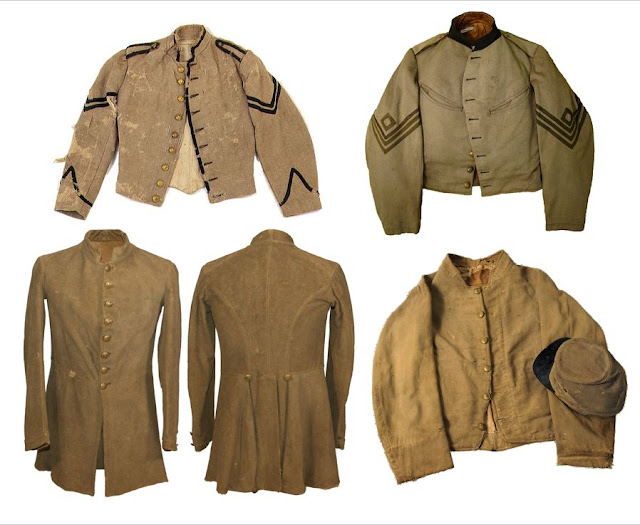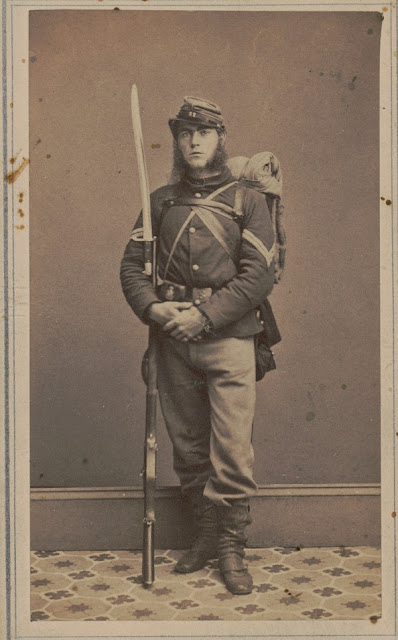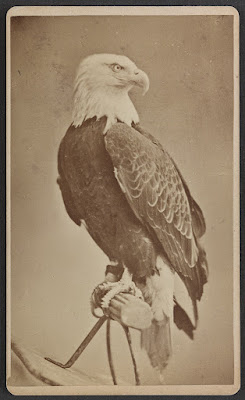A Scene of Public Grief: Bringing the Boys Home After Stones River
A few weeks after the Battle of Stones River, a trio of gentlemen from Salem, Ohio traveled to the battlefield to retrieve the bodies of some of their townsmen who died during the battle. In an extraordinary account from the editor of the Salem Republican, he described the sad scene that marked the arrival of the bodies at the town hall.
“The rough boxes
containing the dead were placed side by side on the platform of the hall and
were opened as speedily as possible,” he stated. “The first box opened
contained the body of Captain Bean; the next was Hale’s, and so on until all
were opened. Among the few men present was an aged father whose son lay in a
rude coffin before him. How eagerly he gazed at his boy and said, “That’s my
son!” and left the room.”
“Few of us present on this occasion ever saw such a sight as
was here presented. There lay the bodies of four young men in the pride and
glory of manhood, three of whom has been buried on the battlefield just as they
fell and presented a ghastly appearance which we do not feel like describing.
Captain Bean had been buried in a coffin and did not look so bad,” he wrote.
The article goes on to describe the nature of the wounds suffered by each man and explained how the community both honored and grieved for its dead heroes the next day. Special thanks to friend of the blog Ken Bandy who shared this remarkable source from his personal collection of 65th Ohio accounts.
 |
| Broadway in downtown Salem, Ohio |
Messrs. Hudson, West, and Wilson, who left this place on
Monday after the Battle of Murfreesboro for the purpose of procuring the bodies
of Captain Urwin Bean [Co. E, 19th Ohio], Thomas T. Hale [ Co. B, 65th
Ohio], Robert D. Wilson [Co. D, 19th Ohio], Joseph Bull [Co. B, 65th
Ohio] , Abner J. Crampton [Co. B, 65th Ohio], and Benton Speakman [Co.
B, 65th Ohio] returned on Tuesday evening of last week at 10 o’clock
with the above bodies except Crampton’s which they were unable to procure.
Mr. West arrived at home on the Sunday morning previous,
leaving the bodies in charge of Hudson and Wilson. Mr. West left the party at
Elizabethtown, Kentucky, some 40 miles south of Louisville, the snow being so
deep, some three feet, that the train was unable to proceed further. Mr.
Hudson, seeing no chance of getting to Louisville by rail, hired a wagon and
eight horses to take the bodies by the Lebanon Pike to Louisville, 46 miles
through the snow. At Louisville, they came by boat to Cincinnati where they
were again placed on board the cars and safely arrived as we stated above.
Although the night was a dismal one, quite a large number of
our citizens were at the station to receive the bodies and have them conveyed
to the town hall where they were to be dressed before delivering them to their
friends. We could not, at this time, but notice the marked difference in the
mission of those here congregated on this cold, stormy winter’s evening with
those who had assembled over a year ago to bid the same young men, whose
lifeless and lacerated bodies lay before them, the last farewell and a heavy
Godspeed in the service of their bleeding country.
But tonight, how changed! The earth is robed in a white
mantle and the cold winds of mid-winter are hurling the rain and snow on every
hand, a fit emblem of the occasion. Back then, the beautiful autumn had
showered her richest treasures upon us and our hearts were light. A sad change has
come over that scene and we are walking amid the wreck of a bloody battle as
the rude boxes before us attest. We hear not the cannon’s roar, nor the quick,
sharp crack of the rifle, but here are the remains of a few of the brave men
who participated in that death struggle and have given their lives for the
country they loved.
 |
| Salem City Hall Local History Collection, Salem Public Library |
The bodies were conveyed to the hall with the exception of
Wilson’s which was taken to New Albany where his mother resides. The rough
boxes containing the dead were placed side by side on the platform of the hall
and were opened as speedily as possible. The first box opened contained the
body of Captain Bean; the next was Hale’s, and so on until all were opened.
Among the few men present was an aged father whose son lay in a rude coffin
before him. How eagerly he gazed at his boy and said, “That’s my son!” and left
the room. Who can tell the agony of a fond parent for their child under such
circumstances?
Few of us present on this occasion ever saw such a sight as
was here presented. There lay the bodies of four young men in the pride and
glory of manhood, three of whom has been buried on the battlefield just as they
fell and presented a ghastly appearance which we do not feel like describing.
Captain Bean had been buried in a coffin and did not look so bad.
As to the nature of the wounds, Captain Bean was shot in the
breast, the ball passing through his right lung, causing almost instant death
by suffocation. The hair on the left side of his head was clotted with blood
but no signs of a ball mark could be found. The ball entered the right hip of
Sergeant Hale, passed through him, and came out on the left side just below the
hip bone. He was carried to the camp hospital nearby and did not die until the
next morning.
Joseph Bull was killed by a piece of shell which exploded
near to where he was standing and struck his right side, just below the ribs,
and passed through him making a frightful wound. A piece of the same shell
wounded Lieutenant R.S. Rook who was standing near him at the time. Benton
Speakman was shot; the ball entered just in front of his left shoulder and
passed through his chest and bowels, coming out near the hip bone on the right
side. He must have been leaning over, or stooping down, at the time. He was
killed instantly.
The bodies, after being washed and dressed, were placed in
their coffins and on Wednesday morning they were delivered to their friends. Captain
Bean’s remains were encased in an iron burial case and remained in the hall
during the forenoon and were visited by a large number of citizens. His body,
in charge of his brother, was taken to Norristown, Pennsylvania for burial
where his mother resides. Speakman was taken to the residence of Mrs. Maria Woodley
near Lynchburg in this county where he lived before he enlisted.
 |
| Methodist Episcopal Church Salem, Ohio Local History Collection Salem Public Library |
The funeral services of Hale and Bull took place at the
Methodist Episcopal Church on Broadway at 10 o’clock on Thursday the 22nd
instant. The hour appointed for the meeting at the church was announced by the
ringing of the town bell which was afterwards tolled during the services at the
church. The principal stores and places of business were closed. The large
audience chamber of the church was filled at an early hour by our citizens who
evidenced by their presence that this sad occasion was not a private but a
public grief.
The exercises commenced by singing an appropriate hymn
followed by prayer by Reverend Stevens, and a sermon preached by Reverend C.H.
Jackson from the 3rd chapter of 1st Corinthians, 22nd
and 23rd verses, which read as follows, “Whether Paul or Apollos or
Cephas or the world, or life, or death, or things present, or things to come,
are all yours. And you are Christ’s and Christ is God’s.”
We should like to have given a portion at least of the remarks made on this occasion but we are unable to do so. Suffice it to say that the sermon was one worthy in every respect of the time and place. At the close of Rev. Jackson’s remarks, Rev. Stevens narrated the following incidents relating to the death of these young men as told him by Mr. Hudson who learned the facts from their officers and companions in battle. After the recital of these incidents, a song was sung by the choir befitting the occasion. The congregation then formed in procession and took at last view of the departed heroes. They were both buried in the cemetery.
Source:
“From the
Battlefield,” Salem Republican (Ohio), January 28, 1863, pg. 2










Comments
Post a Comment